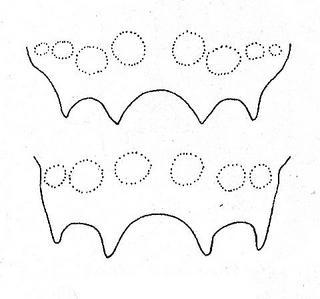
R. M. Bohart L. S. Kimsey, 1982 · 1
Chrysis derivata, tail |
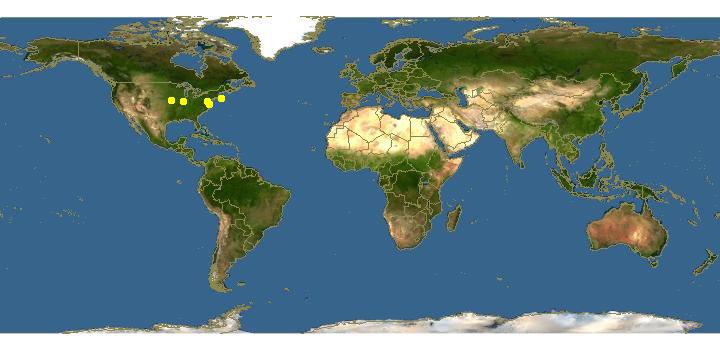
Click on map for details about points.
|
80x5 -
240x3 -
240x4 -
320x1 -
320x2 -
320x3 -
640x1 -
640x2
Set display option above.
Click on
images to enlarge. |
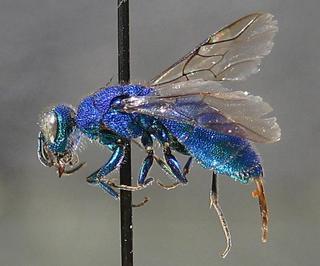
Native Bee Inventory and Monitoring Lab; Photographer: Erika Tucker · 1
Chrysis derivata |
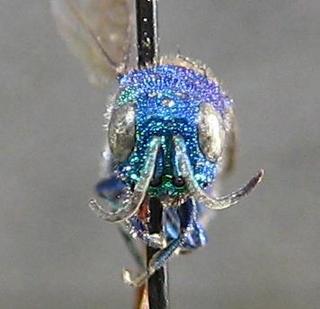
Native Bee Inventory and Monitoring Lab; Photographer: Erika Tucker · 1
Chrysis derivata, face |
|
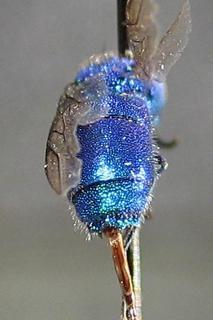
Native Bee Inventory and Monitoring Lab; Photographer: Erika Tucker · 1
Chrysis derivata, rear |
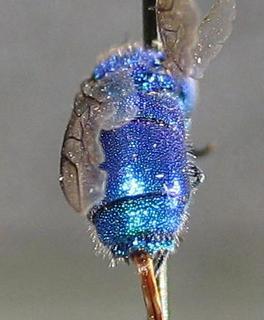
Native Bee Inventory and Monitoring Lab; Photographer: Erika Tucker · 1
Chrysis derivata, tail |
|
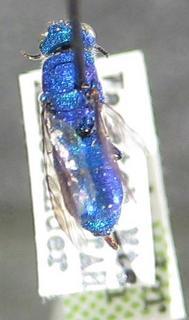
Native Bee Inventory and Monitoring Lab; Photographer: Erika Tucker · 1
Chrysis derivata, top |
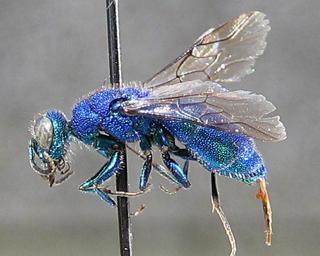
Native Bee Inventory and Monitoring Lab; Photographer: Erika Tucker · 1
Chrysis derivata |
|
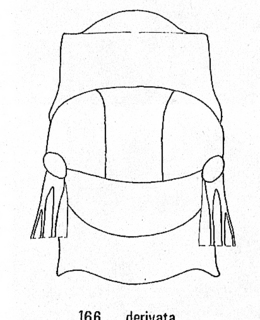
R. M. Bohart and L. S. Kimsey · 1
Chrysis derivata, thorax |
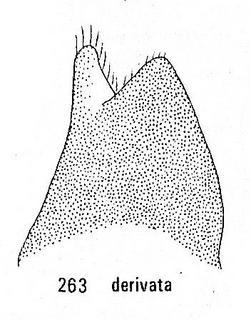
R. M. Bohart L. S. Kimsey, 1982 · 1
Chrysis derivata, male paramere |
|
Overview |
Taken from:
R. M. Bohart and L. S. Kimsey. 1982. A Synopsis of the Chrysididae in America North of Mexico.
Chrysis derivata Buysson
(Figs. 166, 186, 263)
Chrysis derivata Buysson 1891:38. Holotype male, Quebec, Canada (Paris).
Chrysis decepta Rohwer 1909. Holotype female, Boulder, Colorado (USNM).
Discussion: This relatively abundant species is close to the much less common irwini and doubtful cases may require comparison of male genitalia (figs. 263, 265). Female derivatata are usually larger and have the thorax proportionately longer. Males have T-III markedly concave laterally.
Hosts: Ancistrocerus catskill halophilus Viereck, Euodvnerus foraminatus apopkensis (Robertson), E.f. scutellaris (Saussure), Symmorphus cristatus nevadensis (Cameron), all reared from trap stems or borings in wood by Parker and Bohart (1966) and Krombein
(1967).
Material examined 178 males including type of derivata, 286 females including type of decepta.
Distribution: Records are from practically every state in the Union except New Mexico and Arizona. It has been collected also in all the southern tier of Canadian provinces.
Species group of Chrysis pattoni Aaron
Diagnosis: Male F-I not longer than F-III, 1.0-1.5 times as long as broad, female F-I 2.0-2. 7 times; subantennal distance a little more or less than 1.0 MOD, usually shorter than malar space which is 1.0-2. 5 MOD; transverse frontal carina complete nearly to compound eye but not curved in below, no backward branches; genal carina separated from eye; midocellus not lidded; mesopleuron and metanotum rather simple; T-II sometimes with a densely micropunctate median longitudinal ridge; T-III distally with a simple edge and four teeth, laterally nearly straight or concave in males of some species; male S-VIII greatly narrowed distally, least so in karri, most in lucifera.
Included species: amala Rohwer, barri Bohart, derivata Buysson, irwini Bohart, lucifera Bohart, pattoni Aaron, and snowi Viereck.
Discussion: Males of the pattoni group are rather easily distinguished on the basis of male genitalia (figs. 257, 264). Also, they have F-I in various stages of reduction. Females of some species are difficult to separate. Several species have been reared from eumenid hosts in twigs or other wood cavities.
Key to males of Chrysis pattoni group
1. Face with a wide band of dense silvery pubescence on each side (view from above), F-I longer than F-II but shorter than F-III ……………………………………snowi Viereck
Face with rather sparse silvery pubescence, F-I various ………………………………2
2. F-I about as long as F-III and nearly twice as long as malar space, T-III distal rim with
median emargination considerably less than a half circle (fig. 188) ………lucifera Bohart
F-I usually shorter than F-III and much less than twice as long as malar space, T-II various ……………………………………………………………………………………3
3. Wing membrane water clear, T-III distal rim with long and slender teeth out lining an upside down U greater than half a circle (fig. 187) …………………………...barri Bohart
Wing membrane stained, especially in marginal cell, T-III teeth various, body colors usually with blue, green and sometimes some purple ……………………………………4
4. T-III lateral edge rather evenly concave ……………………………………………….5
T-III lateral edge sinuate ……………………………………………………………….6
5. F-I as broad as long …………………………………………………...derivata Buysson
F-I a little longer than broad ………………………………………………irwini Bohart
6. Malar space about 2 MOD or more ………………………………………pattoni Aaron
Malar space about 1.5 MOD …………………………………………….amala Rohwer
Key to females of Chrysis pattoni group
1. Malar space plainly shorter than F-II, less than 1.5 MOD ……………………………2
Malar space a little more or a trace less than length of F-II, at least 2.4 MOD (fig. 164) …………………………………………………………………………………………….4
2. T-III apicomedian emargination relatively shallow, much less than half a circle
(fig. 188), average body length 7 mm ……………………………………lucifera Bohart
T-III apicomedian emargination about half a circle, average body length 5-6 mm ……………………………………………………………………………………………..3
3. Punctures on scutellum and toward middle of T-II a PD or more apart ………………………………………………………………………………snowi Viereck
Punctures on scutellum and toward middle of T-II mostly less than a PD apart ………………………………………………………………………………amala Rohwer
4. T-III apicomedian notch deeper than half a circle (fig. 187), whole body often
bright purple ……………………………………………………………………… Boharti
T-III apicomedian notch a half circle or less, body usually a mixture of blue and green with some purple ………………………………………………………………………….5
5. LID a little more than length of foretibia, T-III apicomedian emargination usually a full half circle ……………………………………………………………………pattoni Aaron
LID equal to or a little less than length of foretibia, T-III apicomedian emargination
usually a little less than half a circle ……………………………………………………..6
6. Thoracic dorsum in dorsal view more than twice as long as breadth at anterolateral
pronotal corners (fig. 166), average body length 7-8 mm ……………….derivata Buysson
Thoracic dorsum in dorsal view about twice as long as broad at pronotal corners (fig. 165), average body length 5-6 mm …………………………………………..irwini Bohart
|
|
| Supported by | |
Updated: 2024-04-25 02:26:48 gmt
|